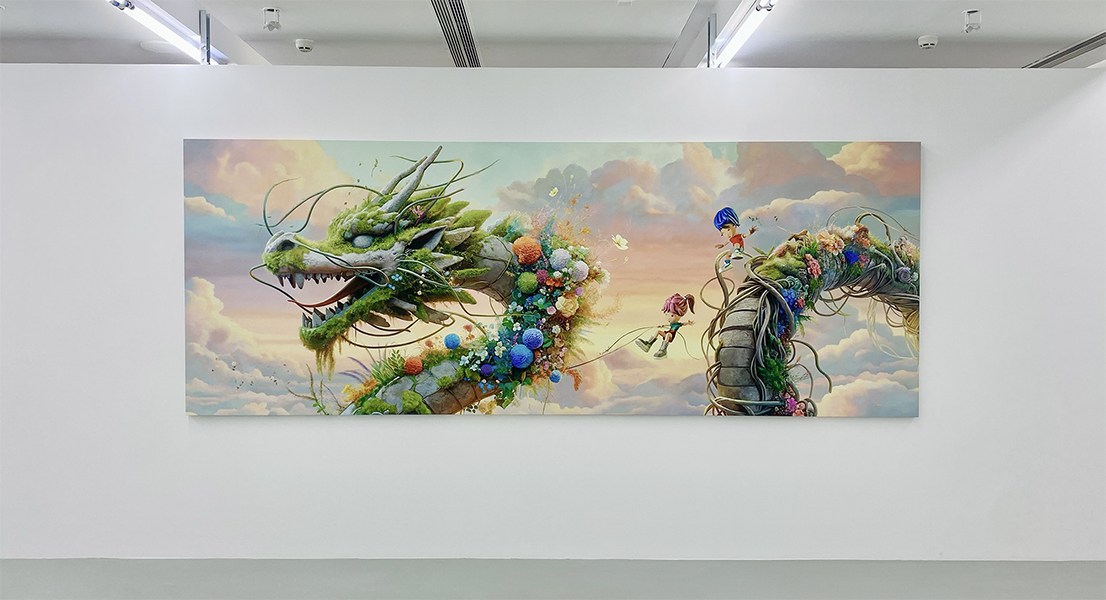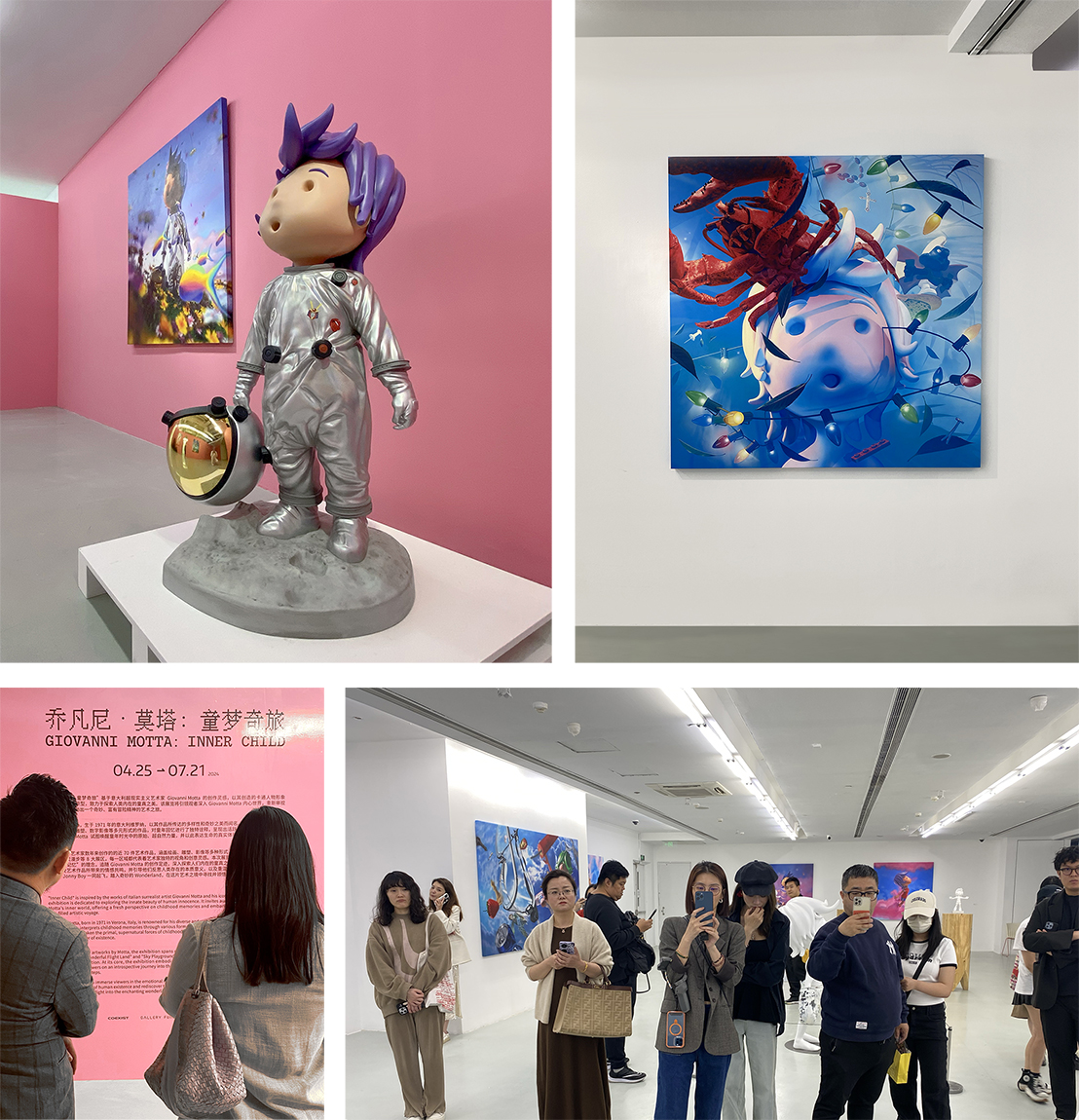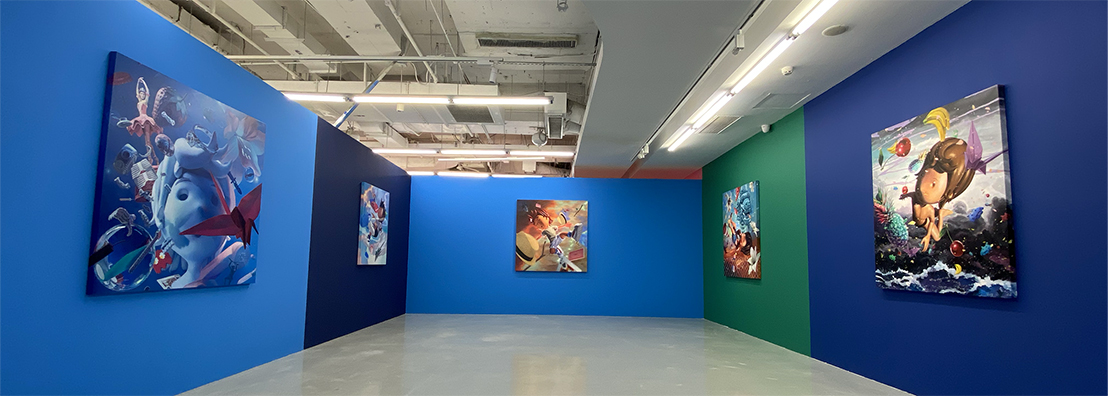by Ric
Entitled The Inner Child, Giovanni Motta's latest exhibition produced by China's Gallery Func, running until July 21, 2024 at the Chi K11 Art Museum, located in the large art-themed shopping mall founded by Hong Kong tycoon Adrian Cheng in Shanghai's Huangpu district, where as many as 80 works including paintings, sculptures, drawings and videos by the artist are on display.The iconographic theme of Motta's research has, for some years now, been the “inner child,” the personification of a psychic force, a reservoir of drives, emotions and energies that, according to him, every individual should rediscover in adult life to regain the lost enthusiasm of childhood. This inner child of his is called JonnyBoy and has the features of a little boy with a tiny body and a big head, a kind of manga-style character through which he explores memories of his own boyhood.

“From the side of the forest, on the highest branch” - 400x150 cm, Acrylic on canvas, 2024.
Memories that also come back to light thanks to regressive meditation, employed by the artist to recover feelings, sensations and above all images buried in the unconscious, which then become the protagonists of his works, where JonnyBoy plays the role of a guide, a sort of new Virgil who accompanies the viewer on the journey of covering his inner child.
In Giovanni Motta's works JonnyBoy, the inner child, is always a suspended, fluctuating and unstable entity, dragging into his vortex objects that are complements and appendages of his personality and that reveal, inevitably, the tastes and passions of the artist, who belongs to Generation X, that of girls and boys who grew up with Japanese cartoons.

“In the Sky” - 9,8 mt, Steel, Industrial varnish, 2024.
The strength of Motta's imagery, which is partly reminiscent of that of a Takashi Murakami and other artists of the Superflat current and partly distinguished by his highly original reworking of Japanese visual stylistic features, lies in his ability to combine traditional techniques, such as painting and sculpture, with cutting-edge 3D modeling and processing techniques and digital animation. All of his works are digitally designed with software such as Photoshop or Cinema 4D and are often translated into the analog dimension of traditional painting. However, while his digital output may take the form of a Jpeg file, a Gif or a video in MP4 format, his drawings and sketches remain on paper and his paintings on canvas strictly hand-painted.

This combination of procedures or, rather, this multimedia not only defines the extension of Giovanni Motta's field of action, but is also the sign of a fundamentally pop attitude, that is, of a programmatic will to address a new and wider audience than the one traditionally interested in art. This is why Motta prefers to adopt the universally comprehensible aesthetics of video games and cartoons, associating it with a style that lingers on every detail of the image, almost transferring the very high definition typical of an Oled screen (an English acronym for Organic Light Emitting Diode) into a hyper-realistic and ultra-retinal pictorial technique that captures the viewer's gaze, precipitating it into a vortex of cinematic images.

In his new canvases, from Under The Moon, One Hour Before Midnight to The Plan for the Theft Falls Apart At Dawn to I Beckoned Hulk to Shield My Night, JonnyBoy's portrait is enveloped in a whirlwind of fetishes that harken back to the 1980s, objects, utensils and toys that have marked the imaginations of multiple generations and catapult the viewer into a state of nostalgic retrospection.
The same one also feels in front of fiberglass sculptures such as For Gods or Where Is Jonny?, which are only a prelude to Jonny in the Sky, a nearly ten-meter-high steel monument installed in the overlooking Reeb Square in Shanghai, at once a tribute to childhood and a reminder to rediscover the Puer Aeternus, the child-god who, according to Gustav Jung, represents one of the primordial elements of the human psyche.
